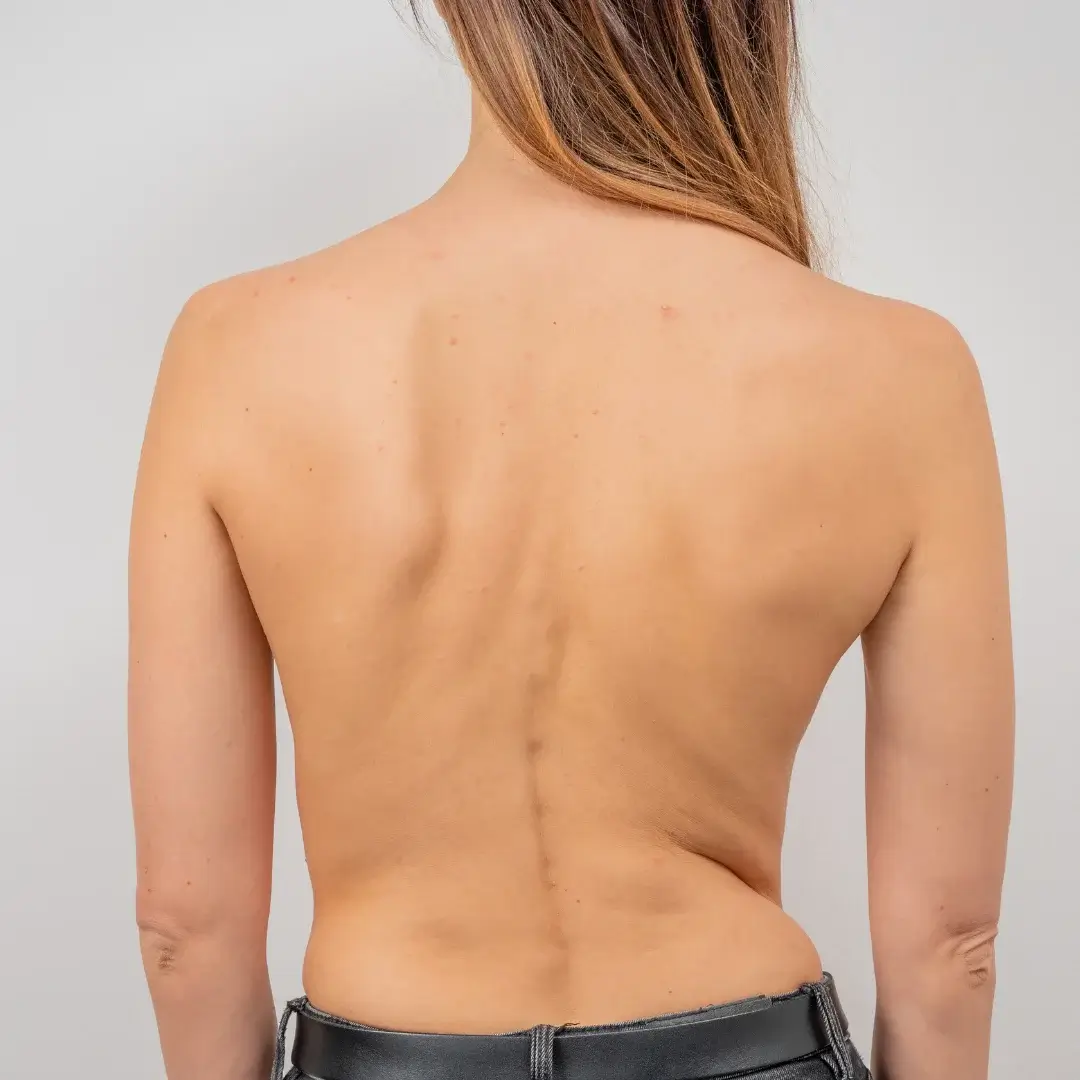Overview:
Scoliosis pain refers to discomfort associated with an abnormal sideways curvature of the spine. While scoliosis can vary in severity, pain may develop due to the strain on the spine, muscles, and ligaments caused by the spinal curvature. It commonly affects children and adolescents but can also occur in adults.
Anatomy:
The spine normally has gentle curves that allow for flexibility and support. However, in scoliosis, the spine curves abnormally sideways, resembling an “S” or “C” shape when viewed from the back. This curvature can affect the alignment of the vertebrae, leading to muscle imbalances, joint dysfunction, and pain.
Causes:
The exact cause of scoliosis pain varies and may include:
- Idiopathic scoliosis: The most common form of scoliosis with no identifiable cause, often diagnosed during adolescence.
- Congenital scoliosis: Present at birth due to abnormal vertebral development in utero.
- Neuromuscular scoliosis: Associated with conditions such as cerebral palsy or muscular dystrophy, affecting muscle tone and spinal alignment.
- Degenerative scoliosis: Occurs in older adults due to age-related changes in the spine, such as disc degeneration or arthritis.
Symptoms:
Symptoms of scoliosis pain may include:
- Back pain or discomfort, particularly on one side of the spine or around the ribs.
- Muscle stiffness or tightness, especially in the lower back or shoulders.
- Uneven shoulders, waist, or hips.
- Visible curvature or asymmetry of the spine when bending forward or standing.
Diagnosis and Tests:
Diagnosis of scoliosis pain involves a thorough medical history, physical examination, and imaging studies. X-rays, MRI, or CT scans may be used to assess the degree of spinal curvature and identify any underlying structural abnormalities.
Treatment:
Treatment options for scoliosis pain may include:
- Observation: In mild cases of scoliosis with minimal symptoms, regular monitoring by a healthcare provider may be recommended to track progression.
- Physical therapy: Stretching exercises, strengthening exercises, and postural training can help improve spinal alignment, reduce muscle imbalances, and alleviate pain.
- Bracing: For adolescents with moderate scoliosis curvature, wearing a back brace may help prevent further progression of the curvature during growth spurts.
- Pain management: Over-the-counter pain relievers, such as NSAIDs or acetaminophen, may provide temporary relief from scoliosis-related discomfort.
- Surgical intervention: In severe cases of scoliosis with significant curvature or progressive symptoms, spinal fusion surgery may be recommended to stabilise the spine and reduce pain.
Prevention:
Preventive measures for scoliosis pain may include:
- Regular physical activity to promote spinal health, muscle strength, and flexibility.
- Maintaining proper posture and body mechanics during daily activities.
- Avoiding excessive or repetitive strain on the spine, such as heavy lifting or prolonged sitting or standing.
- Seeking early medical evaluation and treatment for any new or worsening symptoms of scoliosis pain to prevent complications and promote optimal outcomes.
Outlook / Prognosis:
The outlook for scoliosis pain depends on various factors, including the severity of spinal curvature, the presence of symptoms, and the effectiveness of treatment. While scoliosis is a chronic condition that cannot be cured, appropriate management can help control symptoms, improve function, and enhance quality of life.
Living With:
Individuals living with scoliosis pain should work closely with healthcare providers to develop a personalised treatment plan that addresses their specific needs and goals. By following recommended therapies, adopting healthy lifestyle habits, and practising self-care strategies, individuals can effectively manage scoliosis pain and maintain optimal spinal health and well-being. Regular monitoring and periodic adjustments to the treatment plan may be necessary to ensure continued symptom control and long-term spinal stability.

